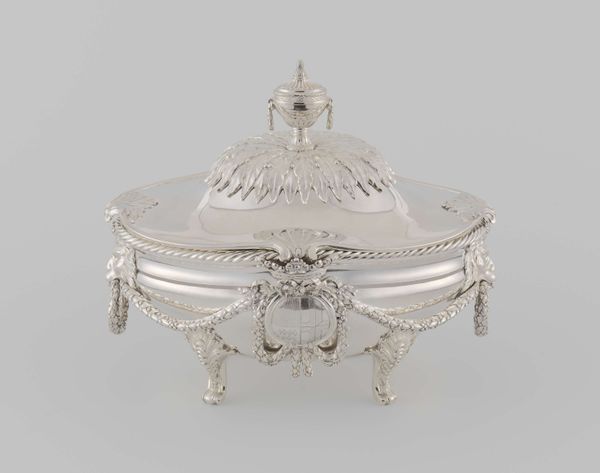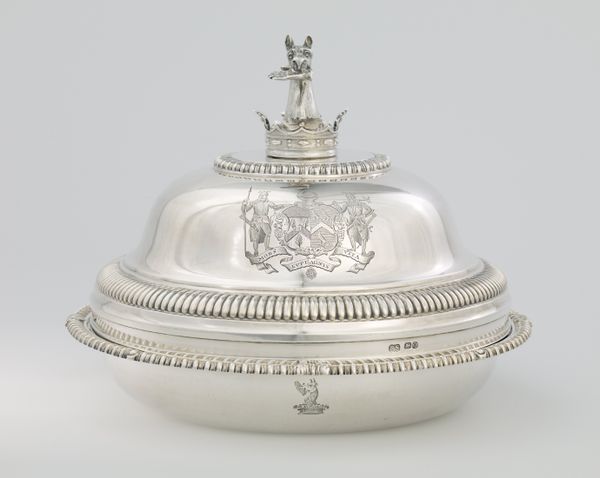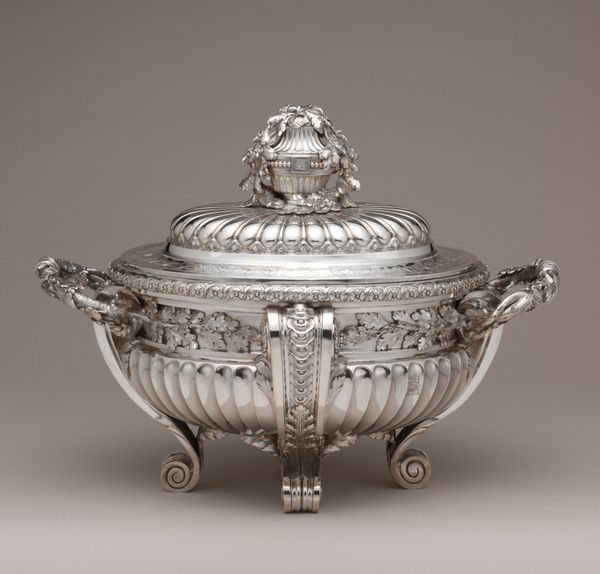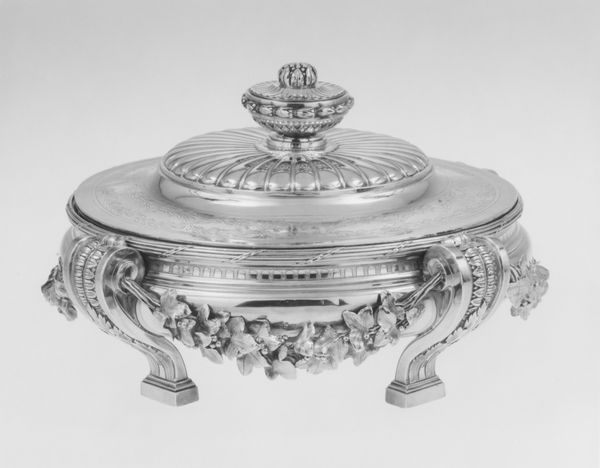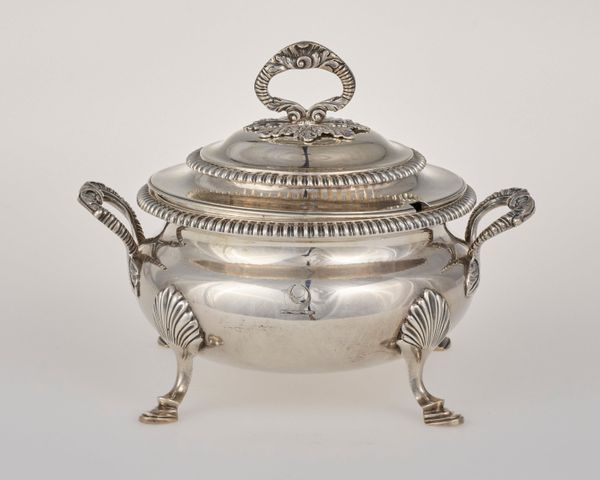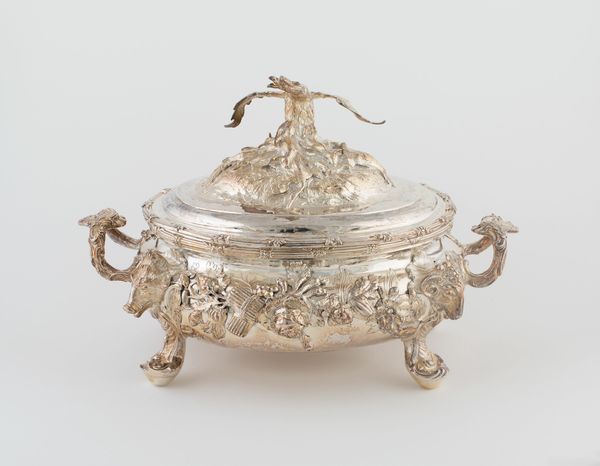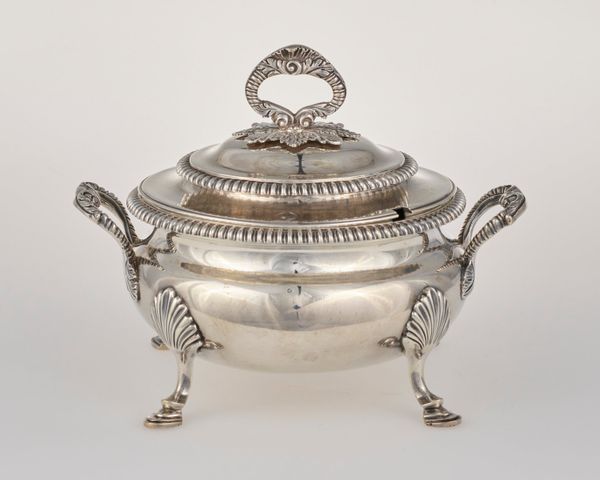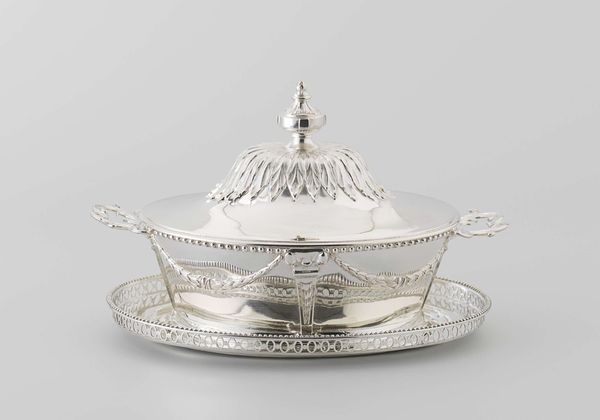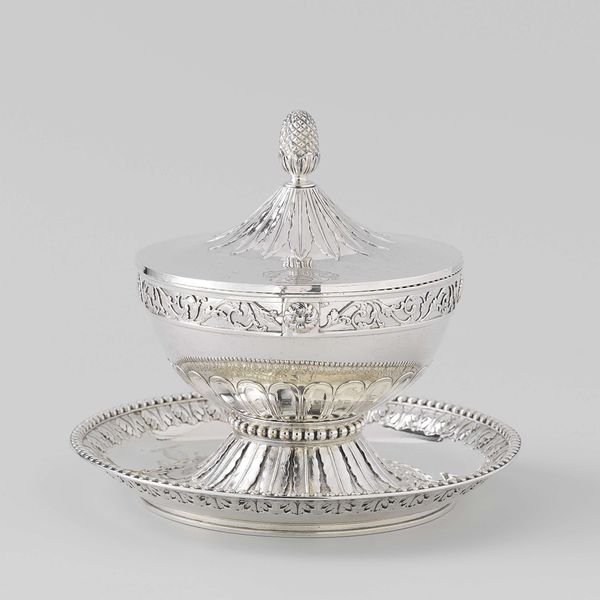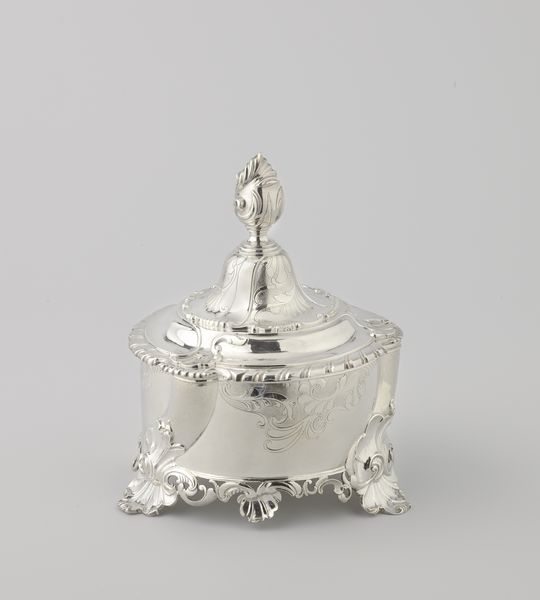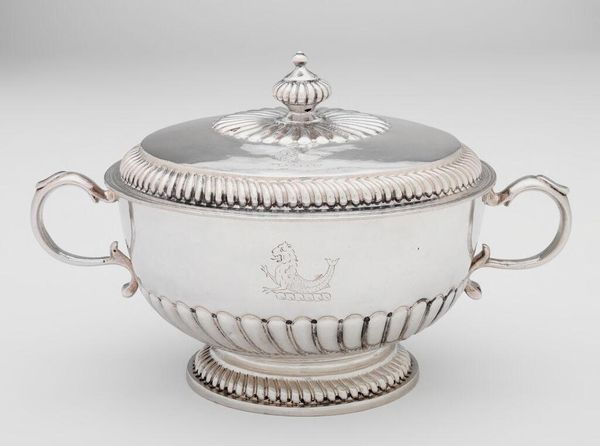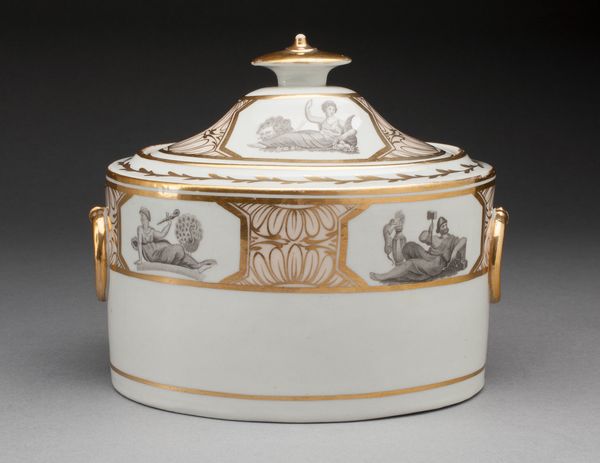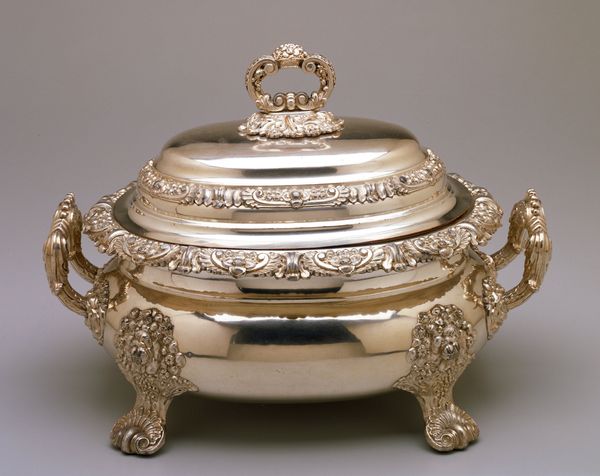
Dimensions: 10 1/2 x 16 1/2 x 9 in. (26.67 x 41.91 x 22.86 cm)
Copyright: Public Domain
Curator: At first glance, I see cool restraint in this elegant silver piece. It feels austere, almost unwelcoming, but certainly commands attention. Editor: What we are looking at is a silver breakfast dish with a warming stand crafted by Paul Storr in 1809. It is currently held in the collection of the Minneapolis Institute of Art. Considering the date, we are firmly in the era of British Imperialism and rigid class structures. How does that inform your initial impression? Curator: That context amplifies the impression. The object speaks to me of control, a silent performance of status and decorum. The repetitive lines, the symmetrical handles, it's a portrait of power rendered in metal. The Lion's paw feet also seem symbolically very loaded to me, recalling England as a heraldic Lion. Editor: Indeed, those feet! Note also how the engraved heraldic shield, a clear visual signifier, communicates lineage and power. However, consider that domestic items like these also operated on a different, perhaps even contradictory, level. The breakfast dish may well have functioned to embody values of domestic stability and comfort. How does it play into emerging constructions of middle-class family life? Curator: I see what you're suggesting, that the object simultaneously performed roles for different audiences – internal affirmations of family unity as well as a public display of aristocratic connections. This gets complicated though when you think about where the raw silver itself originates; invariably from colonized lands and the forced labor of oppressed people. Can an object like this truly signal 'comfort' when its very existence depended on widespread injustice? Editor: Those layers of extraction and exploitation absolutely disrupt any sense of simple domestic tranquility, and demand we interrogate what “comfort” truly meant. The silver carries both the literal sheen of luxury and the stain of systemic inequity, becoming a potent symbol of an era grappling with the dawn of modernity and all its inherent contradictions. Curator: It challenges our present. Can we consume ethically? Does such a concept even exist, within a fundamentally unjust capitalist framework? Editor: This piece is thus not simply a historical relic. It's a call to action for how we critically assess historical consumption. Curator: And how these artifacts are never silent—they demand we keep pushing for radical transformation.
Comments
No comments
Be the first to comment and join the conversation on the ultimate creative platform.
